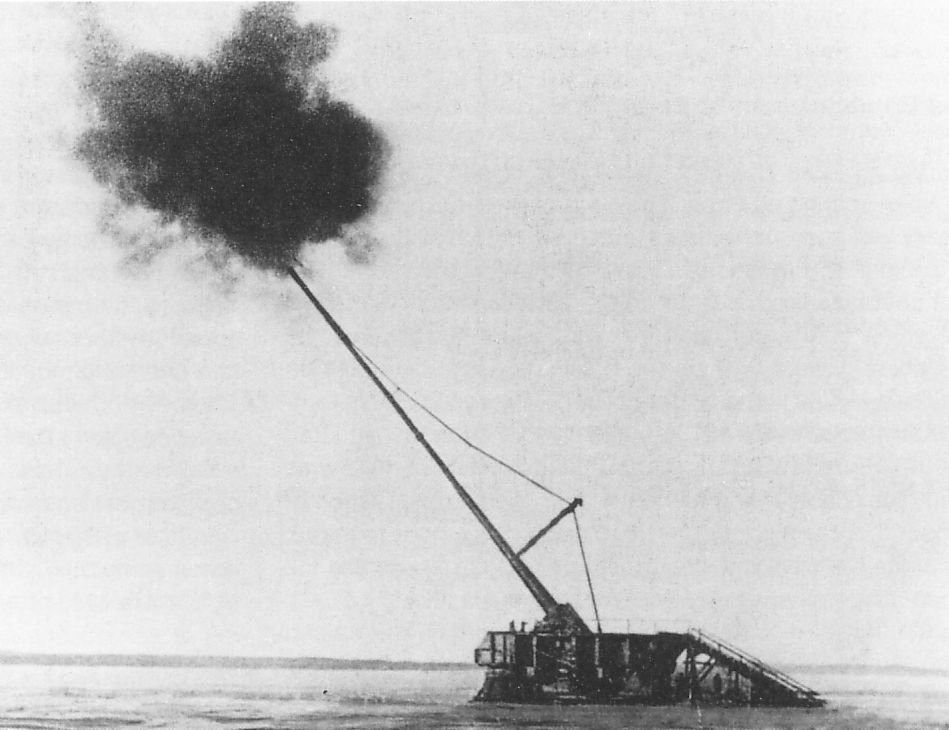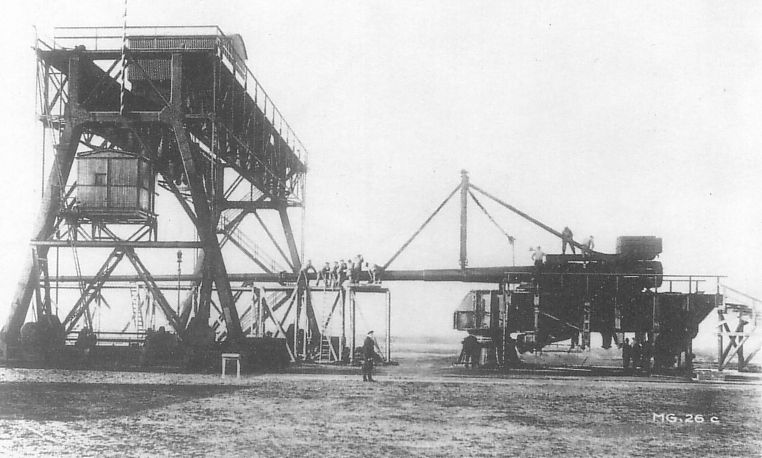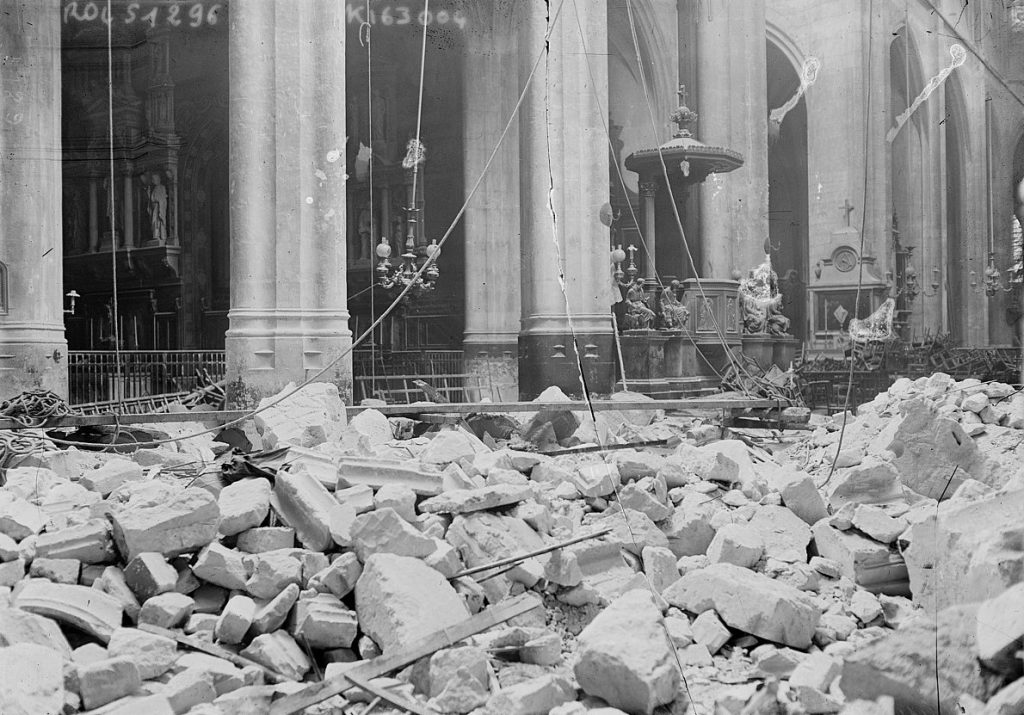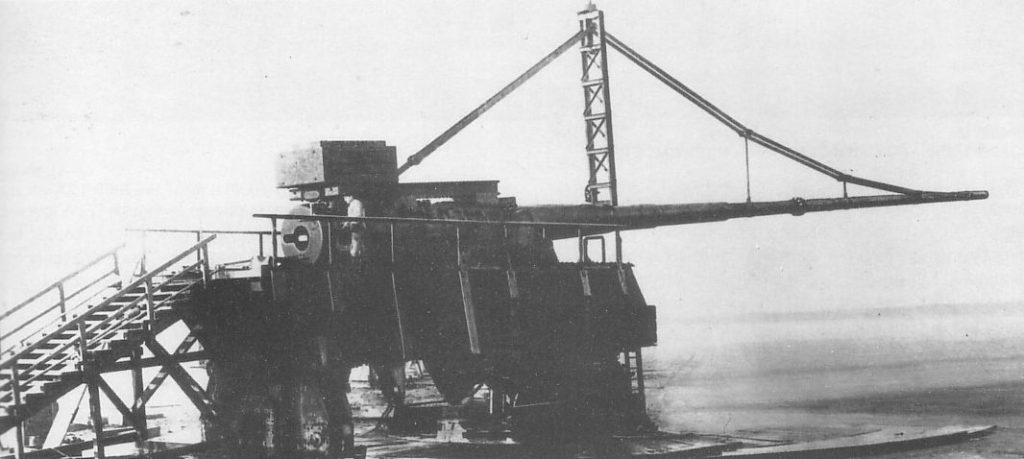
The Paris Gun Had to Account for the Earth’s Rotation
The Paris Gun is a remarkable piece of artillery developed by the German Empire during the First World War. With a barrel so long it had to be supported by cables, it had a range of over 100 km and had to account for the rotation of the Earth to hit its target.
At the time, its projectile was the highest altitude man-made object.
The Paris Gun was conceived as part of Germany’s strategic effort to break the stalemate on the Western Front by targeting Paris, the French capital, directly from German lines.
It had unprecedented range, but its actual effect was rather limited in comparison to the resources used to create it.
Background
As the war settled into a stalemate with trench warfare dominating the Western Front, military leaders on both sides sought new methods to break the deadlock and achieve decisive victories. Germany, in particular, faced the dual challenge of overcoming entrenched positions and inflicting psychological damage on the French civilian population and government to force a resolution to the conflict.
It was here that the idea of a supergun, capable of bombarding Paris from German-controlled territory, was conceived.
The project was led by the German arms manufacturer Krupp, with Fritz Rausenberger, the head of Krupp’s design office, playing a pivotal role. The goal was to create an artillery piece capable of launching shells over a distance of more than 100 kilometers, far beyond the range of any existing gun.
 The barrels had originally been intended for use on Germany’s Bayern-class battleships. Only two of the four planned were completed.
The barrels had originally been intended for use on Germany’s Bayern-class battleships. Only two of the four planned were completed.This ambition truly pushed the boundaries of contemporary artillery technology.
Krupp’s engineers embarked on a rigorous process of design and testing, exploring various calibers, barrel lengths, and propellant charges to achieve the desired range. The project was shrouded in secrecy, with only a select group of engineers and military officials aware of its full scope.
To achieve such enormous range, the Paris Gun’s barrel had to be extremely long and capable of resisting a very large propellant charge. The barrels were constructed from 38 cm (15 inch) naval gun barrels, bored out, and then refitted with a 21 cm (8.2 inch) rifled liner.
 Paris Gun in Krupp’s factory during the First World War.
Paris Gun in Krupp’s factory during the First World War.
A weapon of this size was simply too heavy to be moved by carriage, as was typical of the day, so it had to be moved by rail. A special carriage had to be developed that allowed it to be transported to its firing location.
The range was so great that its designers had to accommodate the rotation of the Earth into firing solutions. They consulted the works of Gustave Gaspard Coriolis, a pioneering French mathmatician who’s calculations formed the basis of the Coriolis force.
The German High Command saw the Paris Gun as not only a weapon, but as a means to demoralize the French populace and government by demonstrating that not even the French capital was beyond the reach of German military power.
 Paris Gun during assembly.
Paris Gun during assembly.
This psychological warfare aspect was considered as important as the physical damage the weapon could inflict.
Despite the ambitious nature of the project, the development of the Paris Gun proceeded at a remarkable pace. By early 1918, the gun was ready for combat deployment.
Design of the Paris Gun
Because none of the Paris Guns were ever found after the war, and many of the documents relating to them were destroyed, many aspects of the weapon are not known.
The most striking feature of the Paris Gun was its immense barrel length. At approximately 37 meters (121 feet), the barrel was significantly longer than any existing artillery piece of the time. This extraordinary length was crucial for achieving the high muzzle velocity needed to propel shells over the unprecedented distance to Paris.
It was so long that a cable and frame, resembling a suspension bridge, had to be added along the barrel to stop it drooping.
 The gun has a bridge-like appearance due to the suspension cables running along its length to support the barrel.
The gun has a bridge-like appearance due to the suspension cables running along its length to support the barrel.
The barrel was constructed from a series of steel tubes, each carefully fitted inside the other to create a reinforced structure capable of withstanding the immense pressures generated during firing. However, each shot induced significant wear on the barrel, so much so that the ammunition had to be specially designed to account for this.
The barrels were good for 65 rounds before needing replacement. But the wear was so great, that each round had to be slightly large in diameter than the last, to ensure a proper seal against the barrel. Each of the 65 rounds had to be fired in a specific sequence, constantly increasing in size.
Once all shells had been fired, the barrel would be sent back to Krupp for refurbishment.
 Diagram of the Paris Gun’s 210 mm projectile.
Diagram of the Paris Gun’s 210 mm projectile.
The shell itself was made from thick steel to survive the initial blast and had a blunted nose. Inside was 7 kg of explosives, primed to detonate by two fuses. The front of the shell was covered by a thin, aerodynamic ballistic cap.
Weighing about 106 kilograms (234 pounds) and containing a relatively small explosive charge, the shells were optimized more for distance than destructive power. The propellant charge was another area of innovation.
A carefully calibrated amount of powder was used to provide the necessary propulsion without exceeding the material limits of the barrel or the shell. The precise formulation and quantity of the propellant were critical to achieving the desired muzzle velocity and range to hit the target.
Its platform needed to be moved via rail to its firing location. Here, a large concrete emplacement was constructed and the gun would be mounted on it.
 The turntable used by a Paris Gun to aim.
The turntable used by a Paris Gun to aim.
Given the extreme range, calculations had to include the Earth’s rotation, air resistance at different altitudes, and even the temperature and humidity effects on the propellant and the air density along the shell’s flight path.
These calculations were complex and required a deep understanding of ballistics and atmospheric science, making the Paris Gun’s operation as much an exercise in physics as in artillery warfare.
Upon firing, the 106 kg round reached an altitude of 12 miles (63,000 ft) in just 25 seconds. 65 seconds later, it reached a peak altitude of 24 miles (127,000 ft), making it the highest man-made object in history at the time. It reached its target 180 seconds later, having covered a 92 mile path over 67 miles of land below.
 Paris Gun firing.
Paris Gun firing.
Usage
Operating the Paris Gun required a large, highly skilled crew. Personnel were trained in a range of disciplines, from ballistics and meteorology to mechanics and explosives handling.
The physical damage caused by the Paris Gun is less catastrophic than might be expected from such a formidable weapon. Over its operational period, starting in March 1918, the guns fired somewhere in the vicinity of 350 shells into Paris, resulting in the deaths of approximately 250 people and causing hundreds of injuries.
The shells, designed more for range than explosive power, caused damage to buildings, infrastructure, and public spaces. Notably, one shell struck the Saint-Gervais and Saint-Protais Church on Good Friday, causing a roof collapse that resulted in numerous casualties.
 St. Gervais church in Paris after it was hit by a shell on Good Friday.
St. Gervais church in Paris after it was hit by a shell on Good Friday.
Psychologically, the impact of the Paris Gun was profound and far-reaching. The ability of the Germans to strike the French capital from over 100 kilometers away, without any prior warning, instilled a deep sense of vulnerability and fear among the Parisian population.
The randomness of the attacks, combined with the inability of French military and civil defenses to predict or prevent them, exacerbated the sense of helplessness. This aspect of psychological warfare was an integral part of the gun’s design and deployment strategy, aiming to demoralize the French populace and pressure the government into seeking peace terms favorable to Germany.
But strategically, the Paris Gun had limited impact on the outcome of World War I. Its primary objective—to break the morale of the French population and force a quick end to the war—was not achieved. The French military and civilian leadership remained resolute, and the Parisian population, though shaken, adapted to the threat with air raid precautions and other defensive measures.
 None of the guns were found by the Allies.
None of the guns were found by the Allies.
The gun did, however, compel the French to divert resources to defenses and intelligence efforts to locate and neutralize the weapon, illustrating the strategic distraction it represented.
While some of the concrete emplacements used by the Paris guns were found by the Allies, they were never able to get their hands on any of the guns. One was reportedly transported back to Germany, and was likely cut up to prevent it from being captured.
News
The Hanging Temple: China’s 1,500-Year-Old Cliffside Marvel of Faith and Engineering
The Hanging Temple: China’s 1,500-Year-Old Cliffside Marvel of Faith and Engineering Perched precariously on the cliffs of Mount Heng in Shanxi Province, China, the Hanging Temple, also known as Xuankong Temple, Hengshan Hanging Temple, or Hanging Monastery, is an architectural…
The Willendorf Venus: A 30,000-Year-Old Masterpiece Reveals Astonishing Secrets
The Willendorf Venus: A 30,000-Year-Old Masterpiece Reveals Astonishing Secrets The “Willendorf Venus” stands as one of the most revered archaeological treasures from the Upper Paleolithic era. Discovered in 1908 by scientist Johann Veran near Willendorf, Austria, this small yet profound…
Unveiling the Maya: Hallucinogens and Rituals Beneath the Yucatán Ball Courts
Unveiling the Maya: Hallucinogens and Rituals Beneath the Yucatán Ball Courts New archaeological research has uncovered intriguing insights into the ritual practices of the ancient Maya civilization. The focus of this study is a ceremonial offering found beneath the sediment…
Uncovering the Oldest Agricultural Machine: The Threshing Sledge’s Neolithic Origins
Uncovering the Oldest Agricultural Machine: The Threshing Sledge’s Neolithic Origins The history of agricultural innovation is a fascinating journey that spans thousands of years, and one of the earliest known agricultural machines is the threshing sledge. Recently, a groundbreaking study…
Nara’s Ancient Sword: A 1,600-Year-Old Protector Against Evil Spirits
Nara’s Ancient Sword: A 1,600-Year-Old Protector Against Evil Spirits In a remarkable discovery that has captured the attention of archaeologists and historians alike, a 7.5-foot-long iron sword was unearthed from a 1,600-year-old burial mound in Nara, Japan. This oversized weapon,…
The Inflatable Plane, Dropped Behind the Lines for Downed Pilots
Experimental The Inflatable Plane, Dropped Behind the Lines for Downed Pilots The Inflatoplane from Goodyear was an unconventional aircraft developed by the Goodyear Aircraft Company, a branch of the renowned Goodyear Tire and Rubber Company, also famed for the Goodyear…
End of content
No more pages to load











